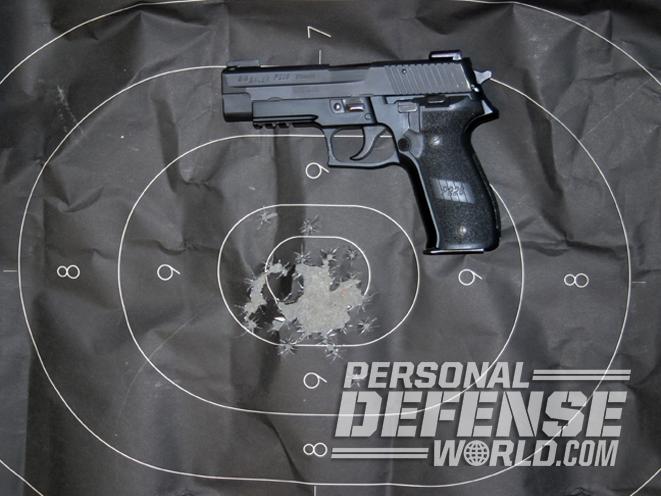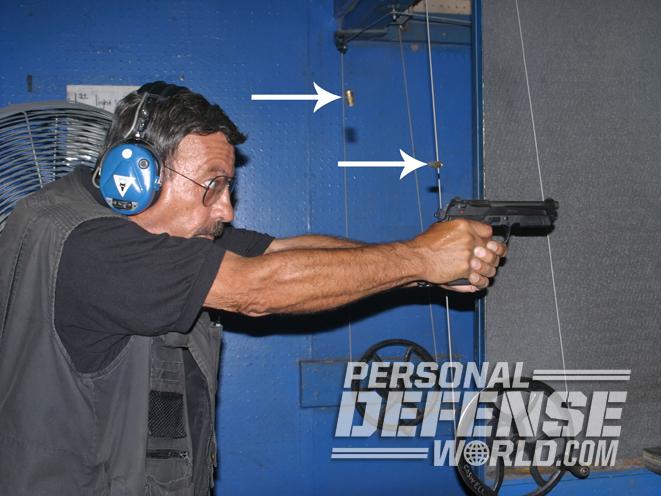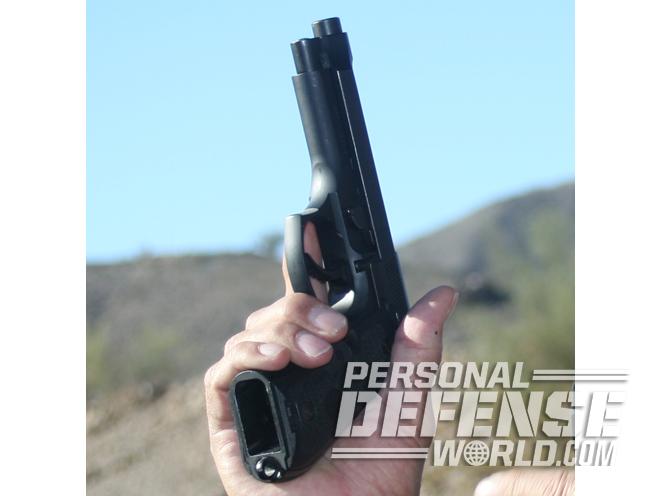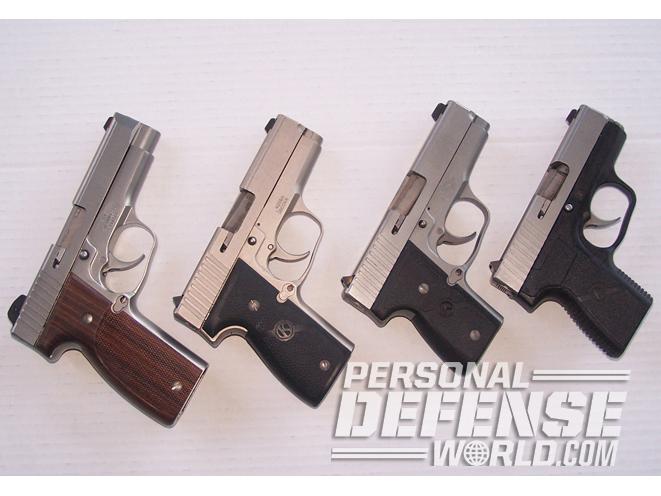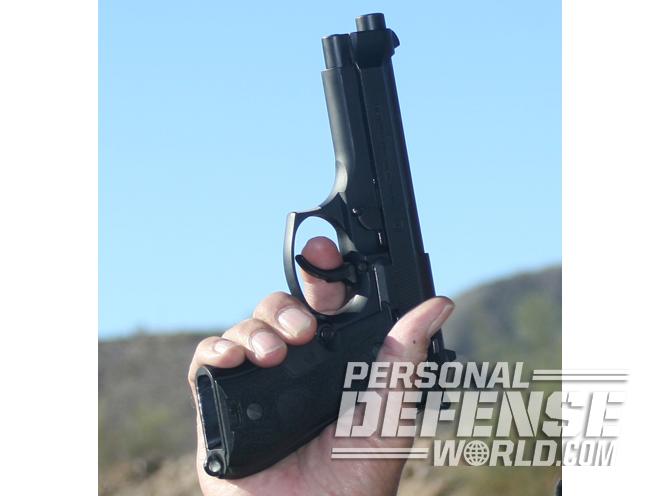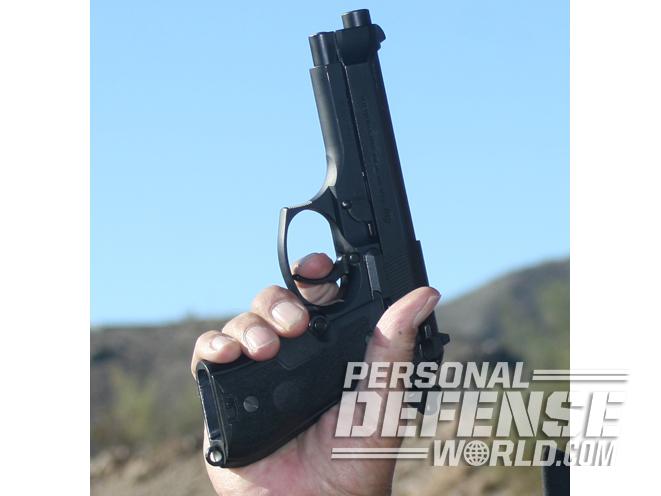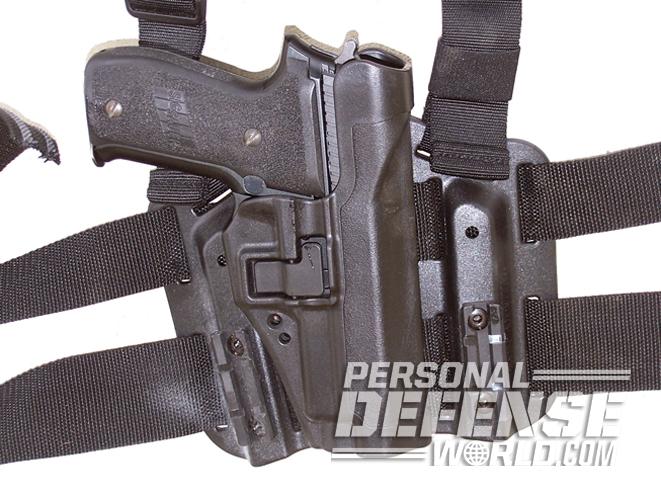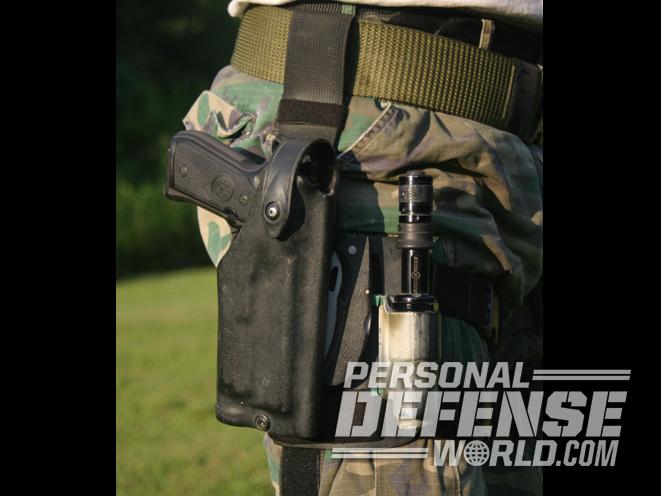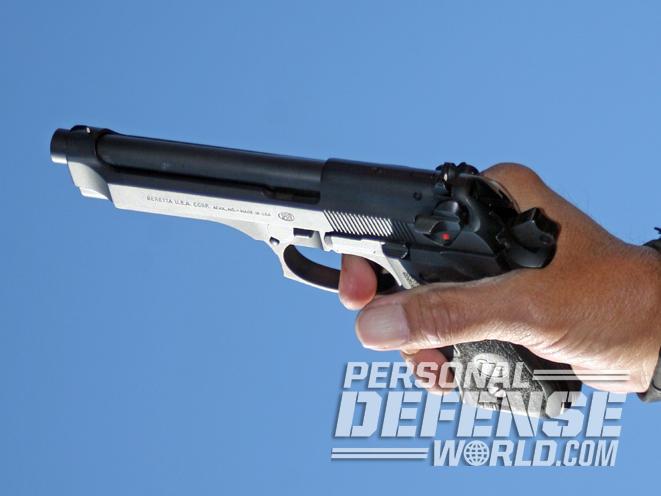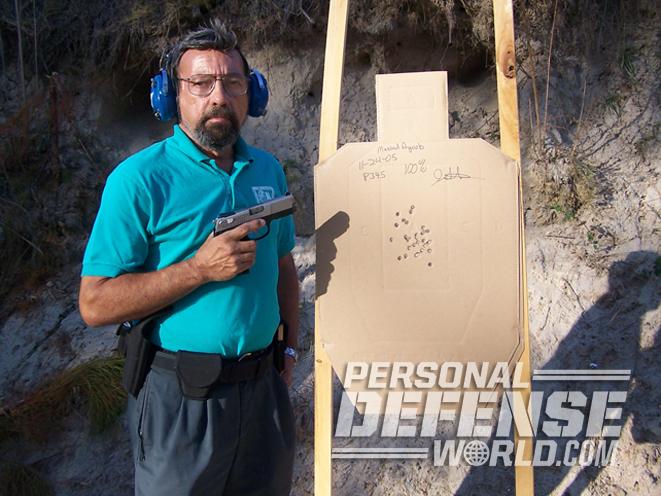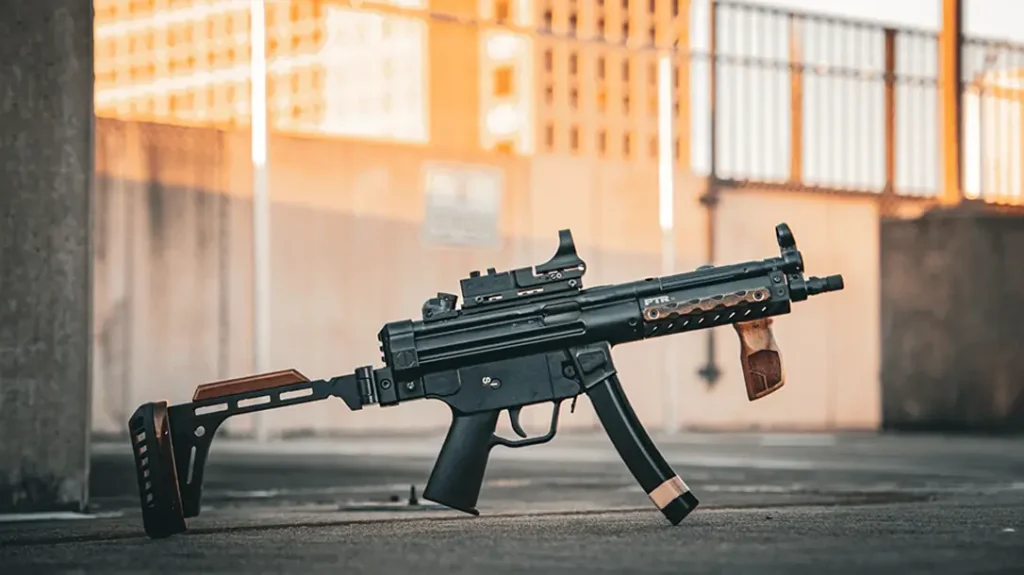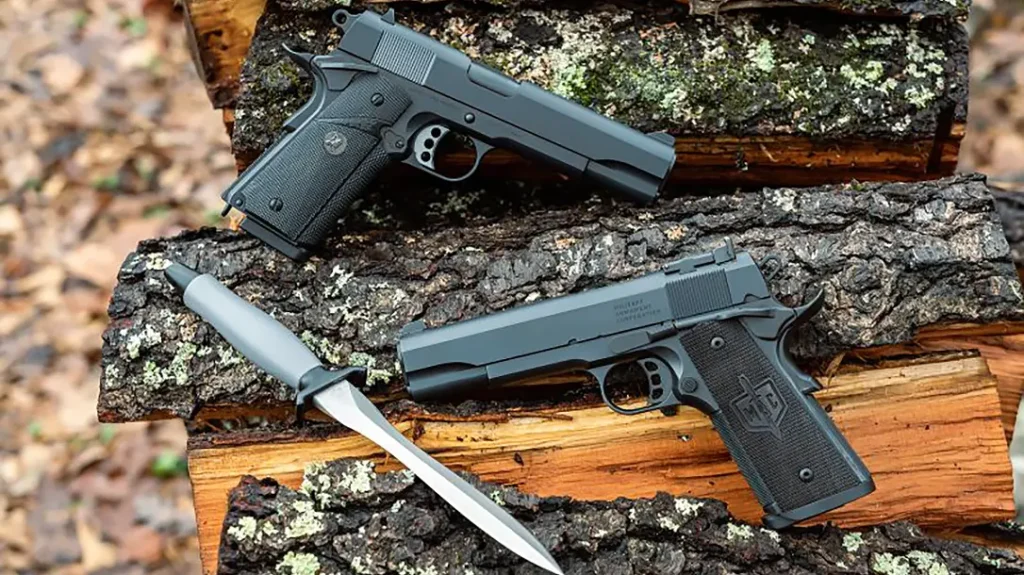In a world of single-action 1911s and polymer-framed, striker-fired pistols, it’s easy to overlook traditional double-action/single-action (DA/SA) semi-autos.
To fit in this category, the gun in question must fire only its first shot with a long, heavy DA pull that both raises and then drops the hammer. The cycling of the pistol from that shot and subsequent shots cocks the hammer automatically for a lighter, easier SA pull, and will do so until the gun has either run out of ammunition or been decocked. Most DA/SA pistols will have a decocking lever to facilitate this.

There was a time not too very long ago when this type of pistol, usually chambered for the 9mm cartridge, was the dominant law enforcement handgun in the United States. It was the FBI standard for a decade or so, and FBI approved for longer than that. These guns are still in fairly wide use. Consider U.S. Navy SEALs, who have been using the 9mm Sig Sauer P226, a traditional DA/SA, for several years. The Beretta M9, a classic DA/SA, also remains the primary handgun of the U.S. Army, Navy, Marine Corps and Air Force. As for law enforcement, the California Highway Patrol issues the Smith & Wesson 4006 and West Virginia troopers are issued the S&W 4566. Both are DA/SA .40 S&Ws and .45 ACPs, respectively. Troopers in Conecticut, Indiana and Pennsylvania are issued DA/SA Sig Sauer .45s.
Advertisement — Continue Reading Below
Action Rewind

The DA/SA semi-auto as we know it goes back to the gun that popularized the concept, the Walther PP of the late 1920s. Chambered for pocket pistol cartridges, it begat the first military DA/SA pistol, the Walther P.38 of World War II fame. When that war was over, many in the U.S. military were quite taken with the P.38 concept. The theory was that it could be safely carried ready to fire with a single, long pull of the trigger to drop the hammer on a chambered cartridge. At that time, the single-action 1911 was either carried with an empty chamber, requiring a slide rack to shoot, or “cocked and locked,” demanding the safety to be thumbed down before the pistol could fire.
In Springfield, Massachusetts, Smith & Wesson was thinking the same way. Its postwar development of a new pistol for anticipated military contracts produced the gun that would become known as the Model 39. It was a 9mm structured more along American lines, but incorporating the same round count as the P.38, eight 9mm cartridges in the magazine and one more in the chamber, as well as the Walther concept of a slide-mounted lever that performed the double duties of decocking the hammer and acting as a manual safety if left in the down position. Introduced in the mid-1950s and given its “Model 39” designation circa 1957, this pistol was a darling of gun writers and some gun enthusiasts but languished in terms of institutional sales until 1967. That was the year that the head of ordnance for the Illinois State Police (ISP), the late Sergeant Louis Seman, convinced the superintendent that the Model 39 would be an ideal service pistol because it was flat enough to be mandated for plainclothes detectives and for off-duty wear yet formidable enough to be a uniformed trooper’s holster weapon.
Advertisement — Continue Reading Below
RELATED STORY: Custom Crusaders – Wilson Combat/Beretta 92G Brigadier Tactical & Sig Sauer P229 Legion
The adoption made headlines in gun magazines, and a few small departments followed the ISP’s lead, but no other state trooper entity would adopt an autopistol until 1983. Within approximately a year, the state police of Connecticut and North Carolina both adopted the Beretta 92, and the New Jersey State Police adopted the Heckler & Koch P7M8, a decidedly non-traditional pistol with a unique squeeze-cocking mechanism. Soon, not just state police but county, municipal, and federal officers were switching en masse to semi-automatics, primarily traditional DA/SA designs.
The Federal Bureau of Investigation had approved and even issued .38 Super and .45 ACP 1911s in its early days, but by the middle of the 20th century, it had standardized on revolvers. Thirty years ago, the only FBI agents carrying autoloaders were Hostage Rescue Team members (with Novak Custom 9mm Browning Hi-Powers) and SWAT teams (9mm S&W Model 459s). But a gunfight in Dade County, Florida, on April 11, 1986, tipped the balance. Two FBI agents were shot and killed, three more were permanently injured by gunfire and another two were wounded before the two perpetrators were killed. The perp who had done the killing had been armed with a semi-automatic .223 rifle; three of the eight agents who opposed them were armed with S&W Model 459s, and the rest carried five- and six-shot DA revolvers. One of the Bureau’s determinations, out of many that emerged from that incident, was that their rank-and-file agents needed sidearms with greater firepower. Soon, Sig Sauer and Smith & Wesson 9mms and .45s were approved for any in-service agent who wanted to buy one, and 9mm Sig Sauers became standard issue for new agents. All were traditional DA/SA models.
Advertisement — Continue Reading Below
What interrupted the reign of the DA/SA was the striker-fired Glock pistol, which was lighter than any of the all-metal DA/SA service pistols, carried more rounds and had a consistently easy and short trigger pull. The FBI considered that anathema at the time, because its doctrine circa 1990 involved “prepping” the trigger with the trigger finger partway through the drawstroke.
However, by the end of that decade, the Bureau and the rest of American law enforcement had gone with the current doctrine of keeping your finger out of the triggerguard until you intend to fire, and the dissonance between the FBI’s teaching and the Glock trigger pull disappeared. In 1999, the FBI officially adopted the Glock .40 as standard issue. The FBI is now looking at new striker-fired 9mms.
Rationale
Advertisement — Continue Reading Below

In 1990, I found myself teaching agent-involved shootings at the DEA Academy, which shares space with the FBI Academy. It was an ideal opportunity to pick the brain of John Hall, the legendary FBI agent who was then head of the Bureau’s Firearms and Tactics Unit (FTU).
Hall explained to me that they went with DA/SA pistols because people under stress put their fingers on triggers—light trigger pulls were particularly prone to unintentional discharges under such circumstances—and safety was paramount. By then, Sig Sauer, S&W and Beretta had all come out with hammer-fired autopistols that were double-action-only (DAO), and I asked why FBI hadn’t gone in that direction.
RELATED STORY: Massad Ayoob – Press-Out vs. Index Draw
Advertisement — Continue Reading Below
The reason, John told me, was that their research had taught them that negligent discharges were for the most part one-shot events. The reason the agent was armed in the first place was that he or she might get into a gunfight. When the agent fired more than one shot, Hall and the Bureau had reasoned, they were in a battle for their lives. A shorter, easier trigger pull would make it easier to hit under stress. Hence the choice of the traditional DA/SA, with the long and heavy pull for the first shot and a relatively easier pull for every shot thereafter. John Hall’s explanation of that made enormous sense to me at the time, and it still makes enormous sense to me now, a quarter century after the discussion.
Mastering The Trigger

Over the years, shooters and firearms instructors found two primary problems with traditional DA/SA pistols. One was that there were two different trigger pulls that had to be mastered: the long, heavy stroke for the critically important first shot, and the shorter, lighter pull for all shots thereafter. The other was that for safe handling in high-stress circumstances, the shooter had to make it second nature to decock the pistol after the necessary shooting was over.
Advertisement — Continue Reading Below
Let’s look at both of those elements. I’ve been teaching handgun shooting for over 40 years, and I’ve found the easiest way to teach the DA-to-SA transition is to place the finger as best you can for the DA shot and simply leave it in that position for all subsequent shots.
RELATED STORY: Gun Review – SIG Sauer P226 X-Five Short
Assuming that the pistol fits the hand of the shooter, this means that, with the barrel of the gun in line with the long bones of the forearm, the distal joint of the trigger finger should be centered on the trigger. This is a lost secret from DA revolver shooting, which gives the shooter’s finger much more leverage against a relatively heavy trigger pull. When the trigger stays back after the first shot, there seems to be no degradation of rapid-fire accuracy when the shooter simply leaves the distal joint in contact with the trigger for subsequent rapid-fire pulls. In short, the DA/SA transition just isn’t that hard in and of itself.
Advertisement — Continue Reading Below
What makes it hard for some is that certain DA/SA autos have a very long reach for the finger to the trigger for the first shot. This is a problem best solved by going with a gun that better fits the shooter’s hand. Let’s take a moment to look at some examples.
The long-gone Smith & Wesson Model 39 had an ideal DA trigger reach dimension for the average adult male hand, and it turned out to work well for smaller hands, too. The same was true of the later compact version, the Model 3913, one of the all-time great concealed-carry 9mms. In the Sig Sauer line, the P239 Compact in 9mm, .357 SIG and .40 S&W is very amenable to shorter fingers and smaller hands. Sig Sauer’s short trigger retrofit for its larger models is also most welcome, and the same proved true of Beretta’s VerTec redesign of its Model 92 DA/SA pistols.
Decocking
Advertisement — Continue Reading Below

The other big concern is decocking the gun once the high-stress shooting is done. It’s something easy to forget even in the calmness of the shooting range, so it is obviously a legitimate concern with a gun intended to be used in the most high-pressure circumstances, the defense of human life.
Some DA/SA pistols do not have decocking mechanisms. I have to tell you, that gives me the creeps. To take the hammer back down where it belongs, which may happen immediately after a near-death experience, you have to put a shaky thumb on the hammer and depress the trigger with a trembling index finger. Any physiologist can tell you that this is a recipe for disaster.
RELATED STORY: Top 12 Street-Ready Pocket Pistols For Everyday Carry
The CZ 75 pistol, in most of its many forms, has to be decocked this way, and it’s the reason why, when I carry one of those guns, I take advantage of the fact that the same design allows me to carry it “cocked and locked.” I simply run it as a SA pistol, and put it on “safe” when the muzzle comes down after the last shot. I do the same with older Beretta and Taurus DA/SA models, which also have frame-mounted, dedicated manual safeties.
The most common type of decocking lever is the Walther style, which is found on the Beretta 92 and most S&W DA/SAs. Bearing in mind that people end up shooting one-handed about half the time when they have to defend themselves, it is imperative that the shooter not take the shortcut of working this lever with the support-hand thumb, and learn to operate it with the thumb of the firing hand.
Here’s more conditional branching. If the lever on the slide is a decocker only, there’s just one movement: Thumb it down. But thumb it down hard, because it’s spring-loaded, and your thumb is working against the spring. If it’s a safety/decocker combined, you need a two-step movement. Thumb it down to decock, and immediately thumb it back up again to return it to “fire” mode, or it will stay on “safe.”

Some traditional DA/SA pistols have frame-mounted levers that are combined decockers and safeties. On some HK and Taurus pistols, for example, the up position for the lever is “safe.” Thumb it down to a horizontal position and it’s in “fire” mode. Thumb it down a little more and it decocks the pistol, but you need to release thumb pressure on the lever at that point, because if you hold it down in the “decock” position, the gun will not fire. HK also makes one model with a strange decocking mechanism that is in the form of a button on the rear of the slide as it faces the shooter. “Know thy pistol” is the lesson that comes from all this.
Another style of decocking lever is found on the Sig Sauer “classic” line of traditional DA/SA pistols. The lever is mounted on the frame, behind the triggerguard, on the left side. Some find it easier to depress with their right thumb, when shooting right-handed; a southpaw can do it with the trigger finger. The FBI felt this method was superior apparently, since it had its 1076s built this way, and S&W briefly offered this option commercially in guns like the Model 1026 10mm and the Model 4526 .45 ACP. They are now collectors’ items.
RELATED STORY: Tactical Reloads – Retaining Your Ammo For The Next Fight
If you have a Beretta, Walther, etc., with the safety/decocking lever on the slide, I would most strongly urge you to manipulate the slide with the Israeli method, in which the support hand comes over the slide as if manipulating a slingshot, with the thumb forward. This will maintain the lever in the position it was in when you began the movement. Using the American technique of the support hand atop the slide with the thumb pointed toward the shooter, developed for Colt pistols that didn’t have slide-mounted levers, the thumb will often unintentionally put the gun on “safe.”
Ease of shooting and firearms training have brought striker-fired pistols, with their “same every time” trigger pulls, to the forefront in semi-automatic pistol sales. Today’s generation of smooth-trigger-pull DAO pistols, such as the Sig Sauer P250 series, have also cut into the sales of DA/SA pistols.
With all of that said, John Hall’s concept of being harder to discharge by accident but easier to sustain fire with in an actual gunfight, continues to ring true. Smith & Wesson has moved away from DA/SA guns, and so have some other manufacturers, but the concept remains eminently logical to many end-users. The DA/SA may not be the most popular semi-automatic pistol format anymore, but for a great many people with varying needs and threat profiles, it is still a very satisfactory option.
